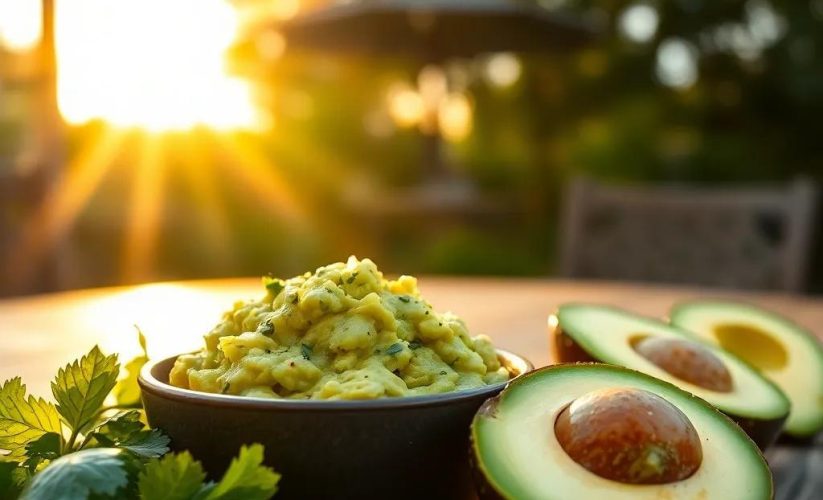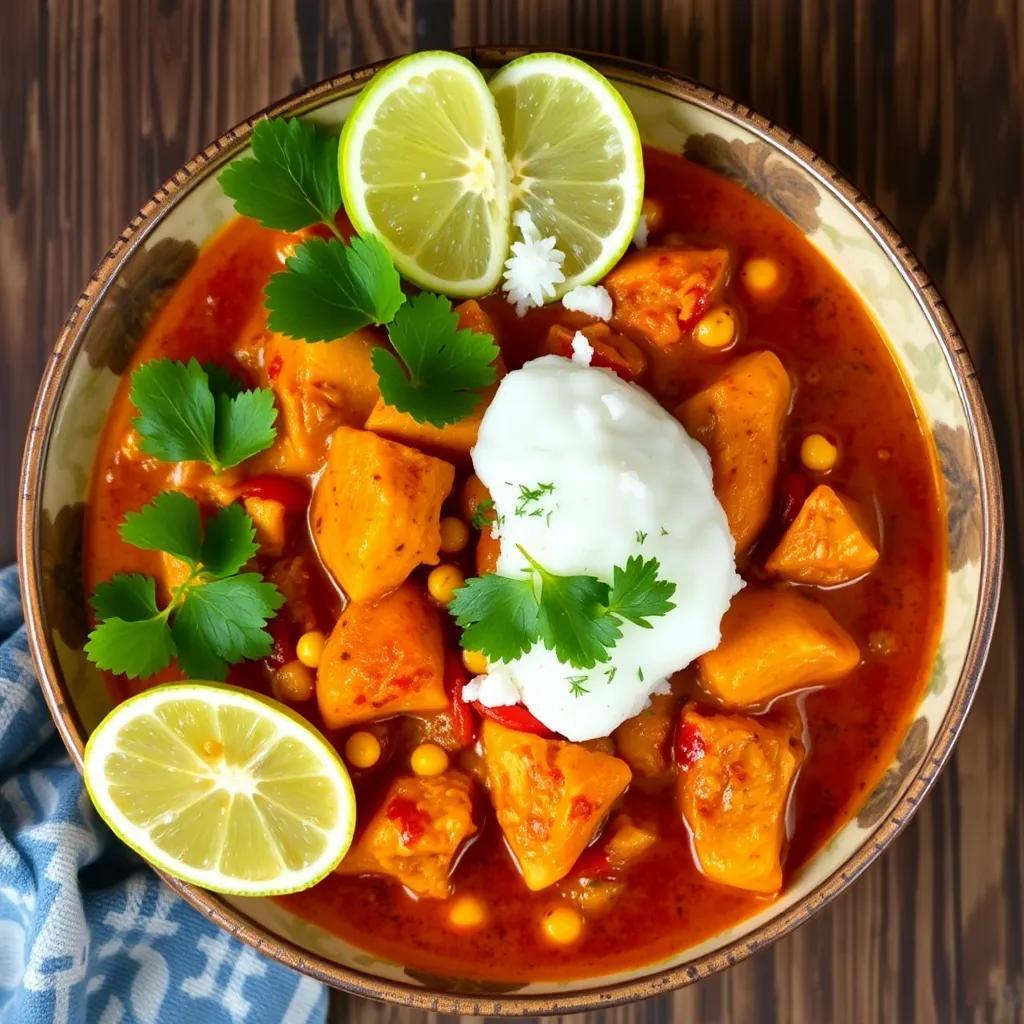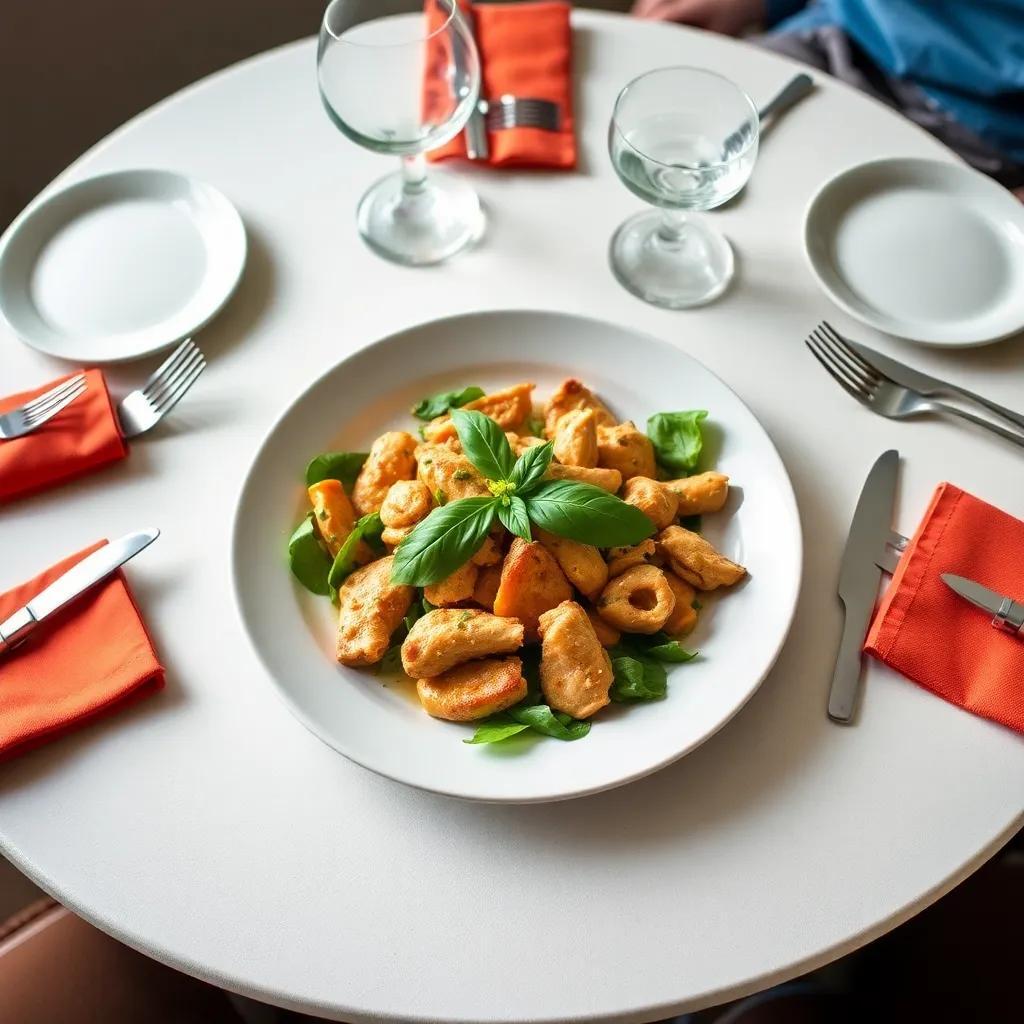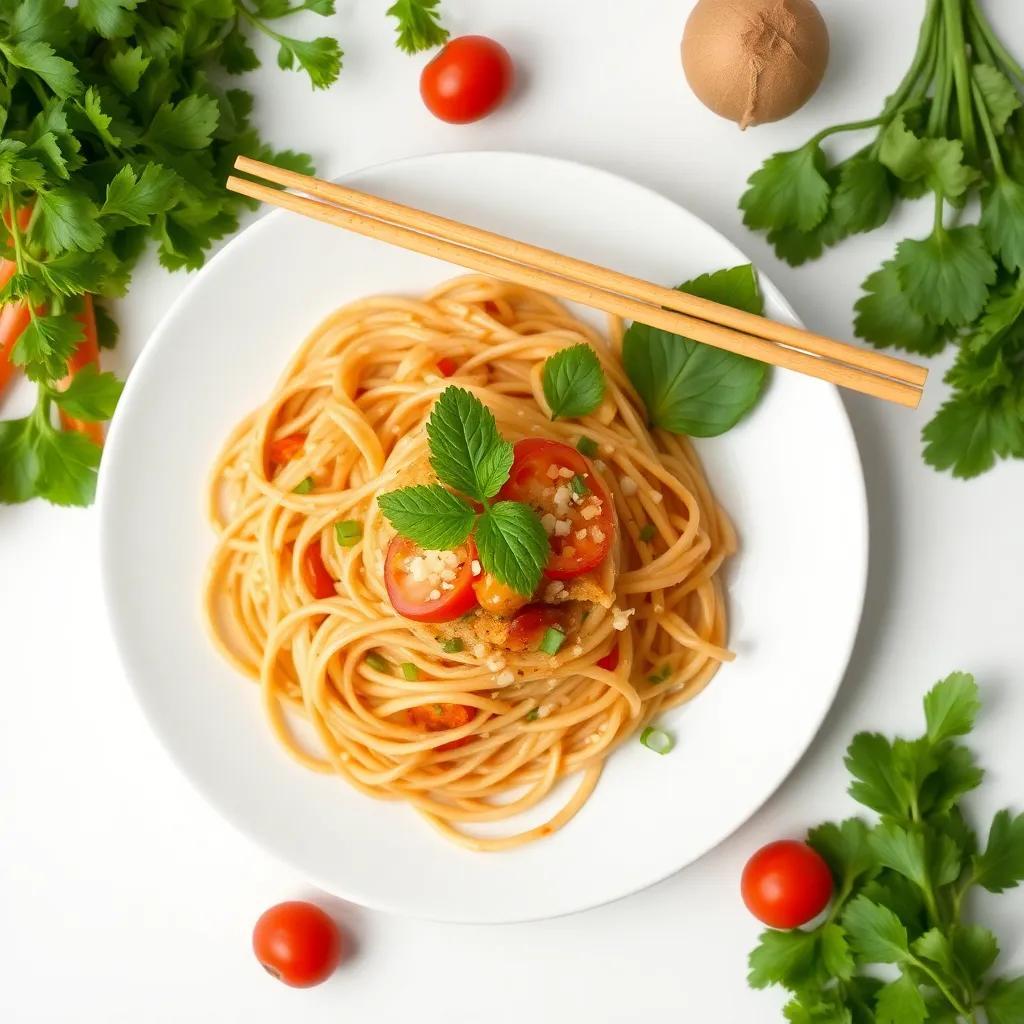Irresistible Mango Sticky Rice Recipe: Easy, Gluten-Free Delight
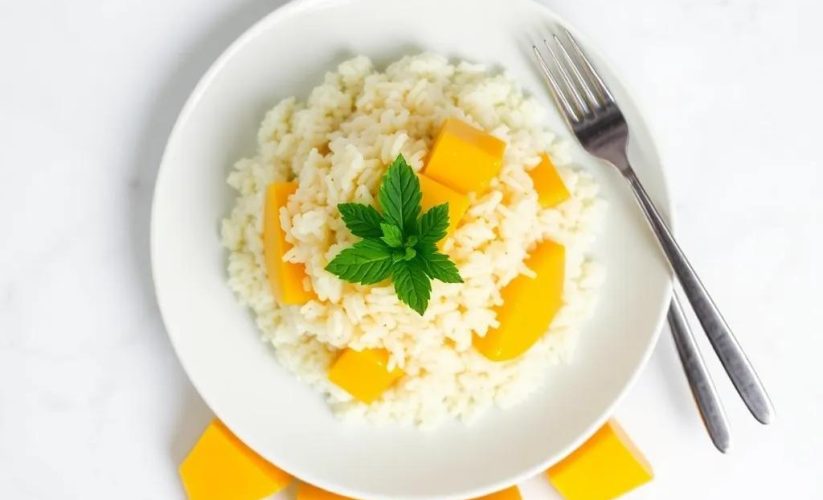
Irresistible Mango Sticky Rice Recipe: Easy, Gluten-Free Delight
🌍 Cuisine: Thai
⚙️ Difficulty: Easy
Ingredients
Nutrition Facts
380
Instructions
- Rinse 1 cup of glutinous (sticky) rice under cold water until the water runs clear.
- Soak the rinsed sticky rice in water for at least 3 hours or overnight for best texture.
- Drain the rice and steam it in a bamboo steamer or regular steamer lined with cheesecloth for about 20-25 minutes until tender.
- While the rice is steaming, combine 1 1/2 cups of coconut milk, 1/2 cup sugar, and 1/4 teaspoon salt in a saucepan.
- Heat the coconut milk mixture over medium heat, stirring until the sugar dissolves completely. Do not boil. Remove from heat.
- Once the rice is cooked, transfer it to a large bowl and immediately pour about 3/4 of the warm coconut milk mixture over the rice.
- Stir gently to combine, then cover and let the rice absorb the coconut milk for about 15-20 minutes.
- To serve, place a portion of sticky rice on a plate, arrange sliced ripe mango beside it.
- Drizzle the reserved coconut milk (or coconut cream) on top of the sticky rice for extra richness.
- Sprinkle toasted sesame seeds or mung beans over the rice as garnish, if desired.
- Enjoy your sweet, creamy, and naturally gluten-free mango sticky rice!
Serving Suggestions
- Serve slightly warm or at room temperature for traditional taste.
- Pair with jasmine or Thai tea for a complementary flavor experience.
- Add a scoop of coconut ice cream for a decadent dessert twist.
- Top with fresh mint leaves for a refreshing contrast.
- Sprinkle chopped toasted peanuts for added crunch.
- Use honey or palm sugar instead of white sugar for a more authentic sweetness.
- Try using different fruits like durian or jackfruit as a variation.
Table of Contents
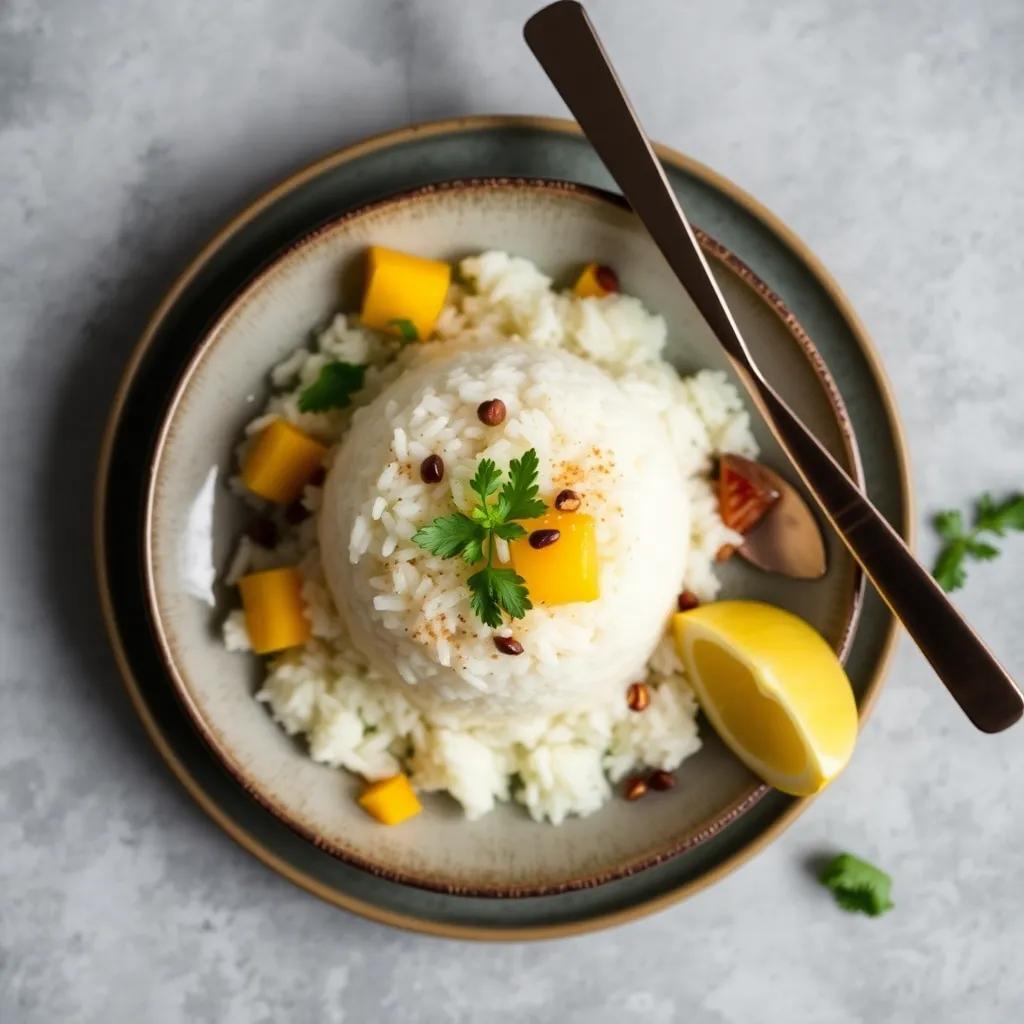
Intro
Mango sticky rice is a timeless dessert that effortlessly brings together the creamy richness of coconut-infused rice and the bright, tropical sweetness of fresh mango. What makes this dish truly special is not only its delightful blend of flavors and textures but also how wonderfully simple it is to prepare, making it accessible for cooks of all skill levels. Whether you’re looking to impress guests at a summer dinner party, add an exotic twist to a weeknight treat, or enjoy a naturally gluten-free indulgence, this recipe fits the bill perfectly.
Its comforting creaminess and refreshing fruitiness strike a balance that feels both indulgent and light, making it a favorite across cultures and occasions. Since it can be served warm or at room temperature, it adapts beautifully to different settings—whether it’s a casual family gathering or a festive celebration. The ease of preparation also means you don’t need to be an expert chef to experience authentic Thai flavors right in your own kitchen, turning a few simple ingredients into a memorable dessert experience.
Ingredient Notes
When it comes to capturing the authentic essence of mango sticky rice, a few key ingredients truly make all the difference in taste, texture, and overall experience. Understanding their roles will help you select the best versions and know how to adapt if unavailable.
Glutinous (Sticky) Rice:
The heart of this dish lies in the unique texture of glutinous rice, often called sticky rice due to its naturally adhesive quality when cooked. Unlike regular long-grain or jasmine rice, glutinous rice has a higher amylopectin content and almost no amylose, which means it becomes wonderfully sticky and chewy rather than fluffy. When purchasing, choose white glutinous rice rather than sweet or black varieties for the classic creamy, dense mouthfeel. Look for rice labeled specifically as “glutinous” or “sticky” rice, often available in Asian markets or specialty grocery stores. If you can’t find it nearby, many online retailers carry it as well. Avoid substituting with regular white rice, as the texture and authenticity will be compromised.
Coconut Milk (Full Fat):
Coconut milk is indispensable for creating that luscious, rich flavor that soaks into the sticky rice, imparting subtle tropical sweetness and a creamy mouthfeel. Using full-fat coconut milk ensures the rice absorbs enough natural fats and sugars, giving the dessert its signature silkiness. When buying, opt for canned coconut milk with no additives or preservatives, reading labels to avoid watered-down or light versions that can result in a thinner sauce. For an even more luxurious touch, fresh coconut milk or coconut cream—carefully skimmed from canned coconut milk—can be used for drizzling on top, boosting richness and depth.
Ripe Mangoes:
The mango’s ripeness is crucial because it balances the creamy, sweet coconut rice with bright, juicy freshness. Choose mangoes that are fragrant, slightly soft to the touch, and vibrant in color—varieties like Ataulfo (Honey mango), Nam Dok Mai, or mangoes labeled as “dessert” types often work beautifully. Underripe mangoes are too firm and tart, which can alter the intended harmony of flavors. If local mangoes aren’t in season, high-quality frozen mango chunks can be a convenient alternative, though fresh is always preferred for optimal aroma and texture.
Toasted Sesame Seeds or Mung Beans (Optional Garnish):
While optional, these garnishes add delightful texture and a subtle nutty finish. Toasted sesame seeds bring a light crunch and a toasty aroma that complements the sweet creaminess, while lightly fried mung beans lend a delicate crispness and earthy note reminiscent of traditional Thai preparations. Including one or the other elevates the dish visually and texturally, but if unavailable, simply omit — the dessert will still shine.
By focusing on these foundational ingredients and choosing them thoughtfully, you ensure every bite of your mango sticky rice is an authentic, indulgent experience—whether you’re sharing it at a summer gathering, a festive occasion, or simply savoring a moment of tropical bliss at home.
Tips & Variations
Mastering mango sticky rice is all about balancing simplicity with technique and a few creative twists to make the dish uniquely yours. Here are some expert tips and delicious variations to elevate your experience, whether you’re a kitchen novice or a seasoned cook.
- Perfecting the Rice Texture:
Soaking the glutinous rice overnight is essential for the ideal tender yet chewy bite. If short on time, soak for at least 3 hours, but know that longer soaking produces a smoother texture. When steaming, don’t rush—consistent steam and gentle folding during absorption help achieve that signature creamy stickiness without mushiness.
- Coconut Milk Magic:
Warm coconut milk mixed with the sticky rice is key for flavor infusion. Use full-fat coconut milk for richness, and avoid boiling it when heating to prevent separation or bitterness. For extra decadence, reserve a bit of thicker coconut cream to drizzle right before serving, which adds a velvety finish.
- Sweetness Balance:
Sugar amounts can be tailored to your taste. If you prefer a more natural sweetness or a less refined flavor, substitute white sugar with palm sugar or honey. Palm sugar, in particular, brings subtle caramel notes that deepen the dessert’s complexity.
- Garnishes with a Crunch:
Toasted sesame seeds and mung beans add delightful texture contrasts, but feel free to experiment: chopped toasted peanuts, crushed toasted coconut flakes, or even finely chopped pistachios offer interesting flavors and colors. Fresh mint or lime zest can also add freshness that cuts through the richness beautifully.
- Mango Alternatives and Seasonal Twists:
While ripe mango is classic, adventurous cooks can try other tropical fruits like jackfruit, durian, or even ripe lychee for a flavor adventure. When mangoes aren’t in season, canned or frozen mango purée can provide convenience though fresh is best for texture and aroma.
- Dietary Adaptations:
This naturally gluten-free dessert is easy to make vegan by ensuring your sugar is vegan-certified and using coconut milk purely — no dairy needed. For a lower-fat variation, try mixing half coconut milk with almond or oat milk; though the flavor will be lighter, it still complements the rice nicely. If avoiding refined sugars, natural sweeteners like maple syrup work well but will slightly alter the taste.
- Serving Warm or Cold:
Mango sticky rice is traditionally served warm or at room temperature to highlight the creaminess of the rice. However, you can chill it for a refreshing cool treat on hot days — simply cover and refrigerate once fully absorbed, then gently reheat or serve chilled, depending on your preference.
- Meal Prep and Presentation:
Prepare the sticky rice and coconut milk mixture ahead of time, then slice fresh mango just before serving to keep it juicy and vibrant. For elegant plating, use small ramekins or mini bowls to layer the rice and mango for a visually appealing dessert, perfect for dinner parties.
By embracing these tips and variations, you can customize this beloved Thai dessert to suit your palate, season, or occasion—making mango sticky rice not only a gluten-free delight but a versatile treat everyone will love.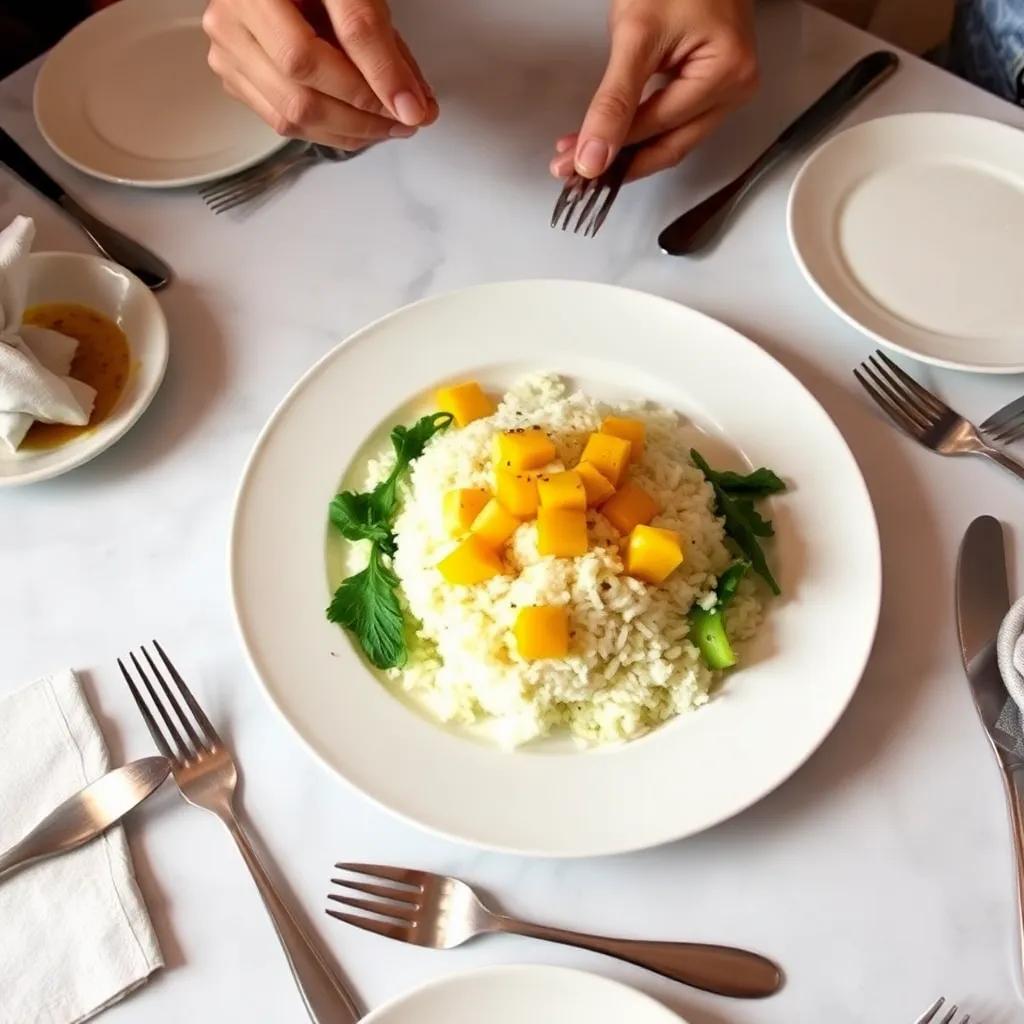
Leftovers & Storage
Leftover mango sticky rice is a treasure worth preserving carefully to maintain its creamy texture and vibrant flavors. Because of the delicate balance between the coconut-infused sticky rice and fresh mango, thoughtful storage ensures you can enjoy this luscious dessert beyond the initial serving.
To store leftovers, separate the sticky rice and mango slices to preserve their individual textures—the rice tends to absorb moisture and can become dense if left resting with the fruit. Place the sticky rice in an airtight container to prevent it from drying out or absorbing fridge odors. Cover the mango slices separately in a sealed container or tightly wrapped with plastic wrap to keep them juicy and fresh.
Keep both components refrigerated, and ideally consume within 1 to 2 days. The sticky rice will hold its creamy consistency best within this window, while the mango maintains its natural sweetness and firmness. Avoid leaving the dessert at room temperature for extended periods, as the tropical fruit can soften excessively and the rice may become prone to spoilage.
If you want to enjoy mango sticky rice later but beyond a couple of days, freezing is an option, though with some caveats. Freeze the cooked sticky rice alone, portioned into freezer-safe containers or heavy-duty zip-lock bags. When ready to eat, thaw the rice overnight in the refrigerator, then gently reheat it by steaming or microwaving with a splash of coconut milk to revive its softness. Since frozen mango loses its fresh texture, it’s best to add fresh mango slices after reheating instead of freezing the fruit.
For meal prepping, you can cook and season the sticky rice a day ahead, refrigerating it overnight to allow flavors to meld beautifully. Assemble the dessert just before serving to retain mango’s brightness and avoid sogginess. This approach is particularly helpful when planning for gatherings or weeknight treats where convenience meets quality.
In summary, proper storage of mango sticky rice means treating the rice and mango as separate stars of the show. Use airtight containers, refrigerate promptly, and consume within a couple of days for the freshest experience. When freezing, focus on the rice alone and refresh the fruit at serving time. These simple steps will help you savor your tropical Thai delight again and again—with every bite as irresistible as the first.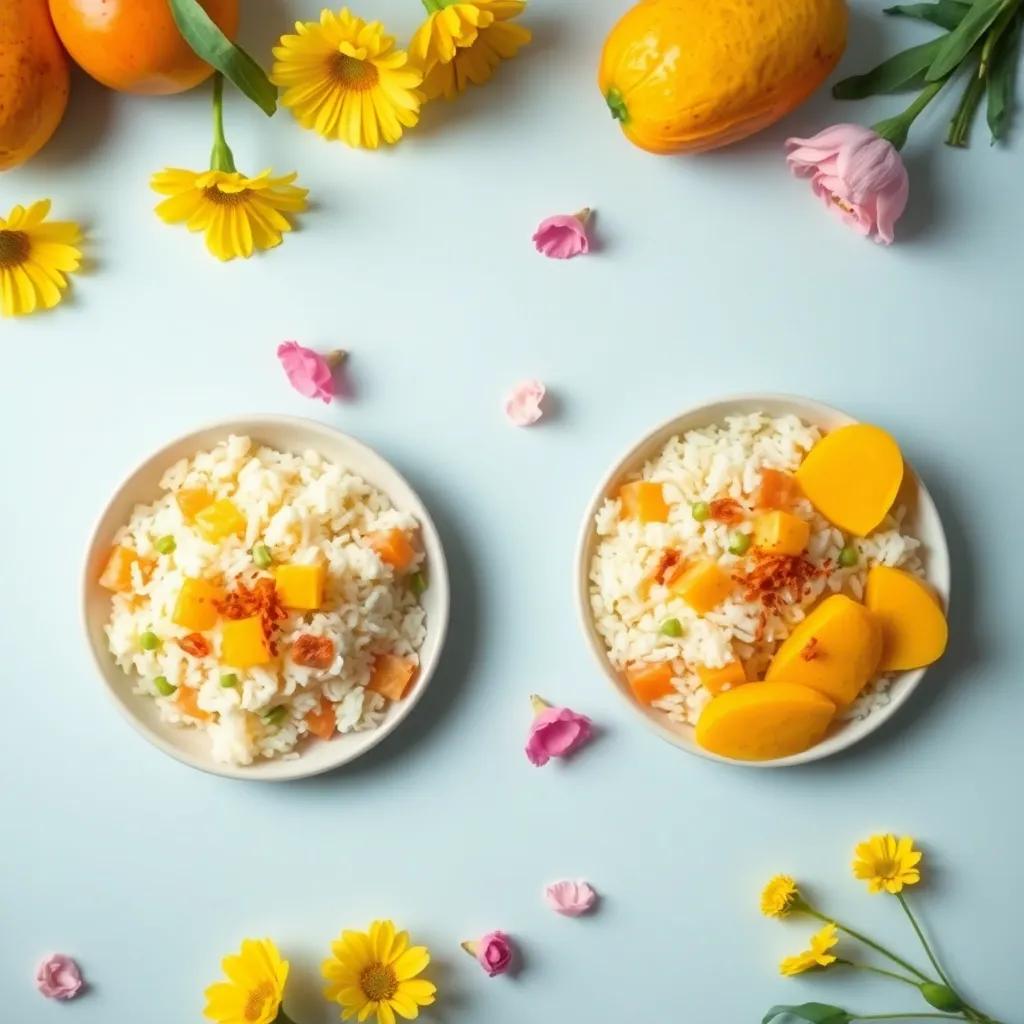
Behind the Recipe
Mango sticky rice is more than just a dessert—it’s a cherished symbol of Thai culture and hospitality that invites you to experience a moment of simple, tropical joy. Rooted deeply in the agricultural traditions of northern Thailand and Laos, this humble dish celebrates the region’s staple crop—glutinous rice—paired with the luscious sweetness of mango, which flourishes in Southeast Asia’s warm climate. Often enjoyed during mango season as a festive treat or a refreshing respite from the tropical heat, sticky rice with mango embodies the spirit of sharing and celebration that defines many Thai meals.
The origins of this recipe trace back through generations where families would gather after harvest, steaming sticky rice in bamboo baskets over open fires and savoring the creamy concoction alongside fresh fruits. What makes mango sticky rice particularly special is its harmonious interplay of textures and flavors: the sticky rice, infused with rich coconut milk, offers a velvety, slightly chewy base, while the mango contributes juice and vibrant aroma, creating a delicious dance on the palate.
For many home cooks trying it for the first time, this recipe conjures memories of exotic travel or a warm glimpse into Thai street food culture, where vendors artfully plate the dessert with a drizzle of coconut cream and a sprinkle of crunchy mung beans or sesame seeds. Preparing this dish at home unlocks a connection to those traditions, transforming basic ingredients into a comforting and elegant indulgence. Each bite carries not only sweetness but also a story of heritage, climate, and community—a testament to how food bridges worlds.
By making this recipe your own, you join a long line of cooks who have cherished mango sticky rice as a seasonal joy and a symbol of Thailand’s culinary generosity. Whether shared with friends or enjoyed in quiet reflection, it invites you to slow down, appreciate simple pleasures, and savor a taste of tropical history.
FAQ
Can I use a different type of rice if I don’t have sticky rice?
How do I store leftover mango sticky rice?
Is this recipe suitable for a vegan or dairy-free diet?
Can I prepare the sticky rice ahead of time?
What’s the best way to reheat mango sticky rice without drying it out?
Can I use frozen mango instead of fresh?
How can I make this dessert a bit healthier without losing the flavor?
Enjoy Your Meal!
There’s something truly magical about the perfect balance of sweet mango and creamy sticky rice—a timeless treat that’s as simple as it is satisfying. This easy, gluten-free recipe invites you to bring a little tropical sunshine into your kitchen, no matter your skill level. Whether you’re a seasoned cook or just craving a new dessert adventure, mango sticky rice is sure to delight your taste buds and brighten your day.
We’d love to hear how your mango sticky rice turns out! Feel free to leave a comment, rate the recipe, or share your favorite twists and toppings. After all, the best part of cooking is making the dish your own—and sharing that joy with others. Happy cooking!

